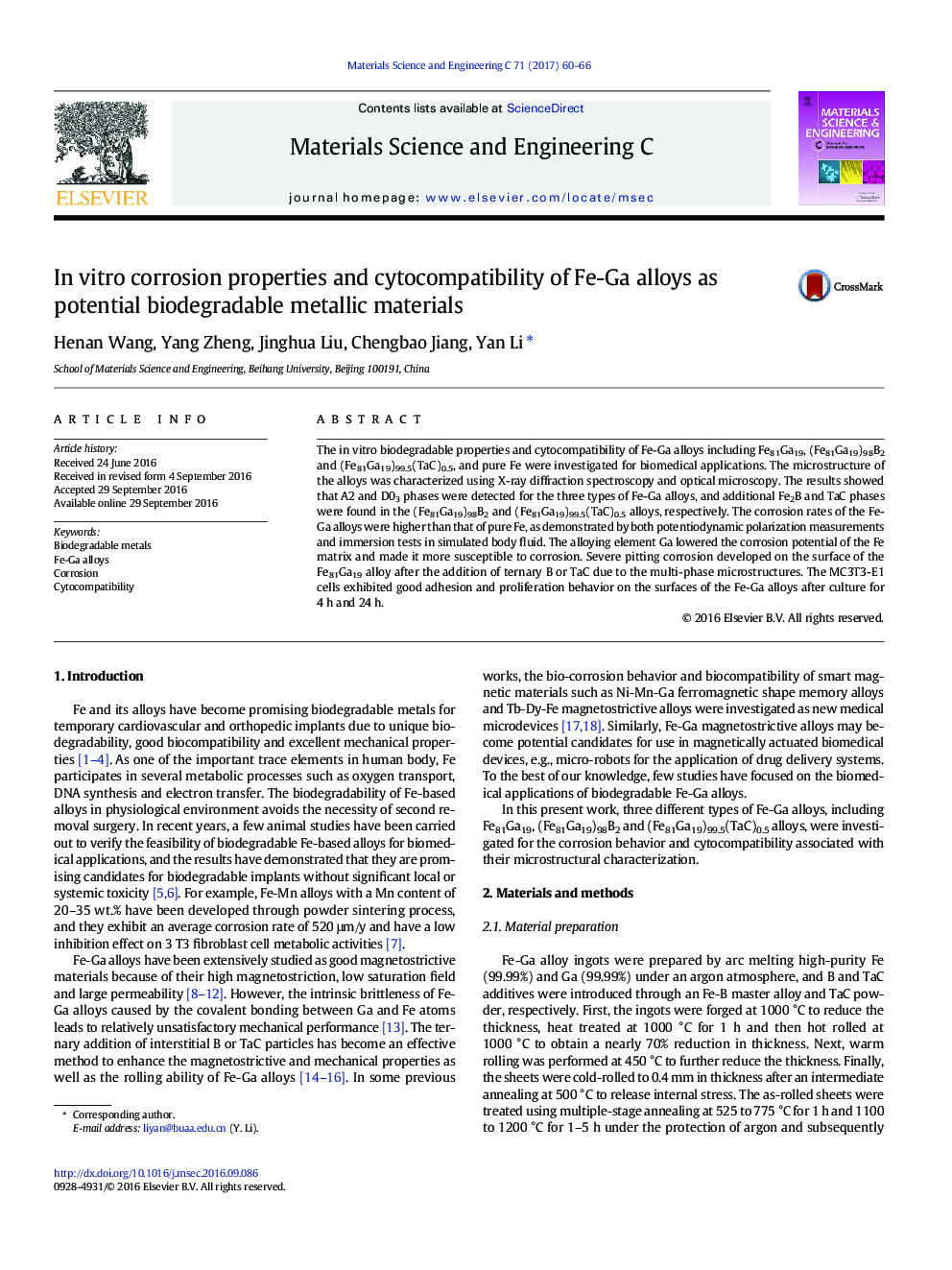| Article ID | Journal | Published Year | Pages | File Type |
|---|---|---|---|---|
| 5434606 | Materials Science and Engineering: C | 2017 | 7 Pages |
â¢Fe-Ga alloys showed a higher degradation rate than pure Fe.â¢Fe-Ga alloys exhibited good cytocompatibility for the MC3T3-E1 cells.â¢The MC3T3-E1 cells were tolerable to the corrosion products of Fe-Ga alloys.
The in vitro biodegradable properties and cytocompatibility of Fe-Ga alloys including Fe81Ga19, (Fe81Ga19)98B2 and (Fe81Ga19)99.5(TaC)0.5, and pure Fe were investigated for biomedical applications. The microstructure of the alloys was characterized using X-ray diffraction spectroscopy and optical microscopy. The results showed that A2 and D03 phases were detected for the three types of Fe-Ga alloys, and additional Fe2B and TaC phases were found in the (Fe81Ga19)98B2 and (Fe81Ga19)99.5(TaC)0.5 alloys, respectively. The corrosion rates of the Fe-Ga alloys were higher than that of pure Fe, as demonstrated by both potentiodynamic polarization measurements and immersion tests in simulated body fluid. The alloying element Ga lowered the corrosion potential of the Fe matrix and made it more susceptible to corrosion. Severe pitting corrosion developed on the surface of the Fe81Ga19 alloy after the addition of ternary B or TaC due to the multi-phase microstructures. The MC3T3-E1 cells exhibited good adhesion and proliferation behavior on the surfaces of the Fe-Ga alloys after culture for 4Â h and 24Â h.
